Sing, Sing, Sing (With a Swing)
Sing, Sing, Sing (With a Swing)
On the evening of January 16, 1938, Benny Goodman took to the stage at Carnegie Hall along with his trio, his quartet, and his big band. It was the first time ever that a swing band played Carnegie. Historians now look to this night as the moment when jazz gained validity from the music establishment.
The last number on the program was "Sing, Sing, Sing" — what Goodman called a "killer diller," a number intended to get a crowd on its feet, jitterbugging. Drummer Gene Krupa sets the groove with his tom-toms, and members of the orchestra take their turns soloing, including a mournful one from Benny himself. But Jess Stacy steals the show with his piano.
Sing, Sing, Sing (With a Swing)
One of the best-known tunes of the jazz era started life as a vocal written by Italy's favorite son, Louis Prima, as "Sing, Sing, Sing (With a Swing)." It was originally intended as a feature for singer Helen Ward and Prima’s friend Bing Crosby. Prima was never known as a composer. Indeed, were it not for “Sing, Sing, Sing,” it is likely that few people would know of any tunes composed by Louis Prima.
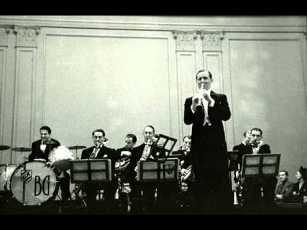
Benny Goodman - Carnegie Hall 1938
Many years after it was composed, Prima recalled how the tune came to be: “I was out at the race track back in 1936 with Bing Crosby and George Raft. On the way home, the phrase ‘Sing, Bing, Sing,’ kept running through my mind. By the time I got home, I decided that wasn’t very commercial, and I changed it to ‘Sing, Sing, Sing.'” Prima tried out the new song (Prima also wrote the simplistic lyric) in a club where he was playing with a small group. “It got no reaction, but a few days later my publisher brought Benny Goodman around to hear it. Benny was reluctant, but he bought it.”
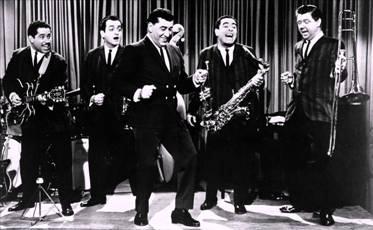
Louis Prima & His Band
While rooted in New Orleans jazz, swing music, and jump blues, Prima touched on various genres throughout his career: he formed a seven-piece New Orleans-style jazz band in the late 1920s, fronted a swing combo in the 1930s and a big band group in the 1940s, helped to popularize jump blues in the late 1940s and early to mid 1950s, and performed as a Vegas lounge act in the late 1950s and 1960s. From the 1940s through the 1960s, his music further encompassed early R&B and rock'n'roll, boogie-woogie, and even Italian folk music, such as the tarantella. Prima made prominent use of Italian music and language in his songs, blending elements of his Italian identity with jazz and swing music. At a time when "ethnic" musicians were often discouraged from openly stressing their ethnicity, Prima's conspicuous embrace of his Italian ethnicity opened the doors for other Italian-American and "ethnic" American musicians to display their ethnic roots.
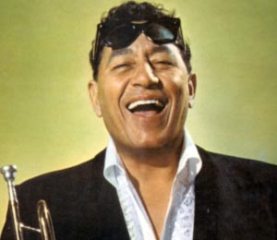
Louis Prima
Louis scored tremendous chart topping hits throughout the Big Band Era with several of his own compositions including "Oh, Marie," "Robin Hood," "Brooklyn Boogie," "Oh Babe,"and many others. Louis Prima composed "A Sunday Kind of Love" in 1946, and the song became a hit over four decades and in six different musical genres including Swing, Doo-Wop, Rock & Roll, Rhythm & Blues, Jazz, and Country! Ella Fitzgerald, Jo Stafford, Frankie Laine, and many other prominent artists recorded this Prima standard.
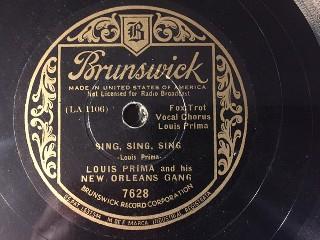
Louis Prima - Sing Sing Sing (1936)
On July 6, 1937, "Sing, Sing, Sing" was recorded in Hollywood by Benny Goodman and a masterpiece was born. With Goodman himself on clarinet, he was accompanied by stunning trumpets, saxophones, trombones, piano, bass, guitar, and arranged by American Jazz composer, Jimmy Mundy. Each instrument shines its brightest to create this downright wonderful piece, this cacophony of boldness, this tornado of mischief and unbridled joy.
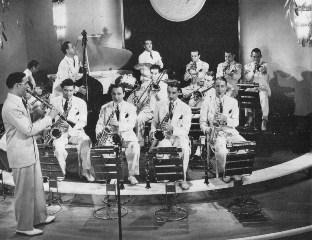
Benny Goodman Big Band (1937)
Unlike most jazz records at the time, this song was an extended arrangement — clocking in near an epic nine minutes. Instead of a standard 10″ 78rpm single, it was released by Bluebird Records as a 12″ record, with the song split over two sides. James Mundy wrote the arrangement for Goodman’s 1937 recording of Prima’s tune, which was made in Hollywood — he combined “Sing, Sing, Sing” with Fletcher Henderson’s “Christopher Columbus.” But the most recognizable part of the song is Gene Krupa's drumming, which exists as a motif throughout the song. Helen Ward recalls that one night Krupa refused to stop drumming when he got to the end of the third chorus and Goodman picked up his clarinet and soloed right along with him.
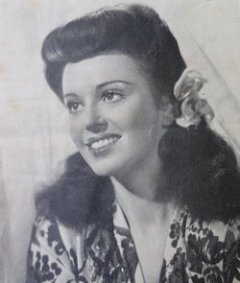
Helen Ward
The classic Victor recording was made some fifteen months later. It shows how much an arrangement could develop, if it was one that audiences were interested in. Audiences were obviously interested in the original Jimmy Mundy blueprint, as were the musicians in the Goodman band, who over those fifteen months made the changes that transformed what was essentially a rhythmic pop tune with a weak lyric into an epic instrumental workout for drummer Gene Krupa, tenor saxophonist Vido Musso, trumpeter Harry James, Benny himself, and the entire Goodman band. This is a great performance. It had a great deal to do with propelling Gene Krupa and Harry James to stardom.
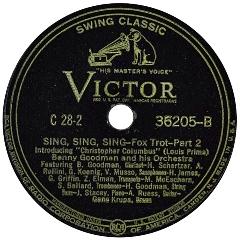
Benny Goodman - Sing Sing Sing (Victor 1937)
The Carnegie Hall concert was a first for jazz, and today is seen as the beginning of its acceptance as mainstream American music. The performances themselves are an artistic triumph (Goodman had given up a few gigs so the band could spend a couple days rehearsing in the Hall and getting used to its unique acoustics). Martha Tilton’s performance invoked a standing ovation and calls for an encore - but it was when the band launched into “Sing, Sing, Sing” that they really tore it up.
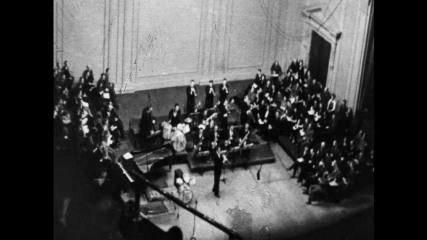
Benny Goodman Big Band - Carnegie Hall 1938
Next day, contemplating the diverse review, the interested editorial opinions in the Times and the Herald-Tribune, someone said to Goodman, "Its too damned bad somebody didn’t make a record of the whole thing." He smiled and said, "Somebody did."
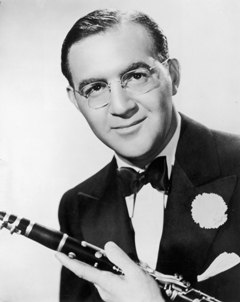
Benny Goodman
“Sing, Sing, Sing” is a song so deliriously happy and brimming with excitement, that it seems anything is possible. The moment it begins, with that mischievous beat of the drum, you know you are about to hear something beautiful and wild. Then the trumpets kick in and woah, just woah. Before you know it you’re up and dancing and without a care in the world as you hear the piano softly here or the crash of the symbols there.
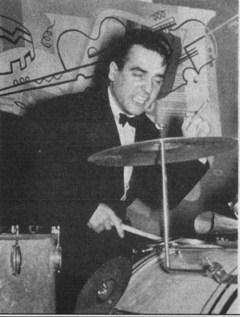
Gene Krupa (1937)
Sing, Sing, Sing (With a Swing) lyrics by Louis Prima
Sing, sing, sing, sing Everybody start to sing La dee da, ho, ho, ho Now you're singing with a swing Sing, sing, sing, sing Everybody start to sing La dee da, ho, ho, ho Now you're singing with a swing And when the music goes around Everybody goes to town But here's something you should know Ho ho baby ho ho ho Sing, sing, sing, sing Everybody start to sing La dee da, ho, ho, ho Now you're singing with a swing ………………………………………. And when the music goes around Everybody goes to town But here's something you should know Ho ho baby ho ho ho Sing, sing, sing, sing Everybody start to sing La dee da, ho, ho, ho Now you're singing with a swing
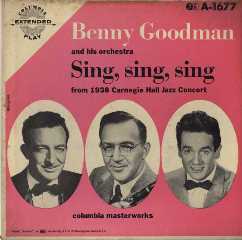
Harry James, Benny Goodman, Gene Krupa
Benny Goodman - Sing, Sing, Sing (With a Swing) – Carnegie Hall 1938
Last Updated (Sunday, 29 April 2018 17:10)








